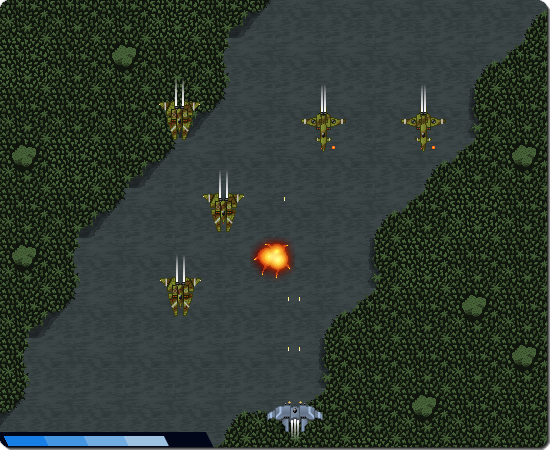
Level 1, but now with updated art. It’s still not really final – the large trees could use some work, the jungle borders are still somewhat flat and the water is too obviously tiling – but it’s definitely moving in the right direction. It took me quite some work to make sure the enemies were sticking out enough from the background. I’m using more saturated and bright colors for them, while I try to keep the background darker and less saturated. It surely takes some testing to get right.
So, that’s what I’m working on now, and the more I do it, the more I get the hang of it. Pixeling is fun and with my in-game editor in a usable state, creating these levels is actually quite enjoyable. Let’s hope it shows in the final product! 
